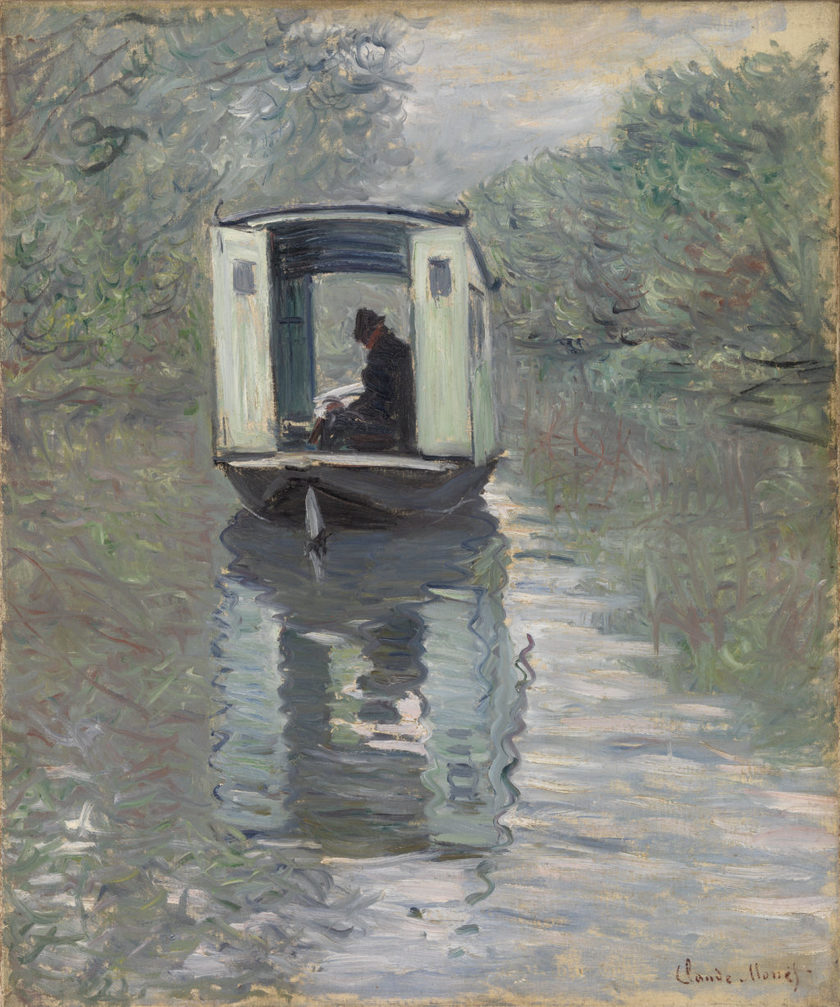
You’ve got to have goals, they say. Smart, well-defined goals.
“If you don’t know where you are going, how will you know that you HAVE ARRIVED?”
The morning of my eighth birthday was warm and sunny, unusual for mid-April in St. Petersburg (then Leningrad). The first warm day after a long, cold winter.
I went out, and sensed the warm touch of sunshine and the cool touch of breeze on my left cheek, both within a single moment. And this unexpected contrast suddenly changed the whole world around me. The time slowed down, the noise of the city faded away, and everything felt just perfectly perfect.
I stood there, within this perfect moment, and knew, with absolute certainty, that I HAVE ARRIVED.
Last week, in our small group for conversations about paintings, we contemplated Monet’s Studio Boat.
We meet in this new NOWHERE of virtual space, in the NO-WHEN of randomly scattered time zones. Just to look at paintings — at reproductions hanging in (on?) another nowhere. Or is it the same one?
These conversations have the same perfectly goal-less, agenda-less quality as that warm morning of my childhood, in the sacred, mysterious space created and held for us by a painting. The space for peak experiences.
And this painting, as though still in-progress after more than a century of hectic, goal-driven activities of humankind that drives itself towards ever-increasing productivity and ever-increasing busyness… — as though Time has stopped within the painting process, and within the moment being painted.
It embodies the same goal-less quality in all its dimensions of being — from the boat designed not to go anywhere, to the unfinished areas of the picture plane.
I have no quarrels with goals, but if you always know where you are going, doesn’t the journey become a bit boring?